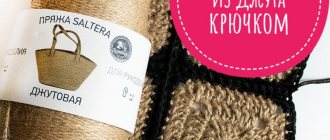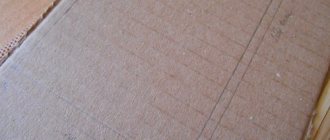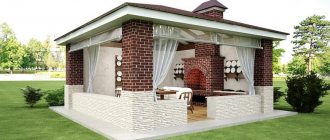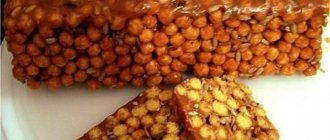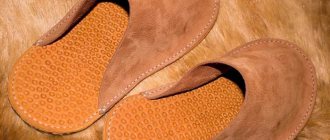Where to use mosaic?
Apron. By apron we mean a part of the wall located above the working surfaces of the set in the part where splashes of grease and droplets are most likely to penetrate: above the sink, table and panel. You can completely lay out this area with a mosaic in the form of some ordinary pattern or a whole picture of small parts. Or you can only part of the wall, connecting it with simple tiles.
Tabletop – Surprisingly, this is great for decorating tabletops. A surface made from this material is not afraid of temperature changes, humidity, or chemicals included in detergents.
The mosaic floor also looks very unusual. You can lay out the pattern in the very center, you can cover it entirely with multi-colored squares, or you can make a simple pattern.
Walls and furniture. A kitchen room completely covered with mosaics will look quite colorful, but using it to mark some area or part of the wall will be acceptable. They also make window sills, bar counters and furniture facades from mosaics with their own hands.
Glue
Many people are interested in what to glue the mosaic onto so that it holds firmly. The adhesive composition must be carefully selected to match the properties of the wall surface, material, and operating conditions.
Special tile adhesive
The easiest way is to purchase a special adhesive for tiles at a building materials store, made on the basis of Portland cement with the addition of plasticizers. This is a ready-made composition that only requires dilution with water to the required thickness. The glue ensures reliable adhesion to any surface. This glue is not suitable for glass mosaics due to its light gray tint.
Tile adhesive Source purplemint.ru
Polymer glue
The acrylic-based mixture ensures reliable fixation of mosaics made of any materials on various surfaces. This is the best ready-made adhesive for rooms with humid air. Dyes are added to the composition, which makes it possible to use it to create interesting design solutions. Before use, stir and apply to the surface. The glue dries quickly, forming a glass-like mass.
What material is used?
Glass is a material that is heat-resistant and resistant to aggressive environments, strong and reliable. An apron made from glass mosaic will please the eyes for several decades. Thanks to the striking refraction of rays in the sun's rays and the richness of the color palette, this material looks very effective.
Ceramic granite is a fairly strong, environmentally friendly, water-resistant, easily affordable material that is resistant to temperature fluctuations. Basically, ceramic granite mosaics come in soft colors and are very often used for flooring.
Real stone. Various format mosaics are made from real stone: in the form of squares, rectangles, circles. Sometimes they even leave small relief pebbles completely. The advantage of the material is that it is virtually permanent; the disadvantages are a limited palette of colors and a high price. Real stone mosaics are often black, brown or gray. For the most part, small parts are glued onto a mesh base so that you can very easily put it on with your own hands.
Smalt is made from small particles of glass, pressed at high temperatures with the addition of metal oxides. It has a wide range of colors, brighter and richer than glass. Smalt frescoes were made in Rome, but they have come to the 21st century without losing either integrity or beauty.
The creative process of this material is quite complex, and therefore it is expensive and is rarely found in hypermarkets selling building materials. Much more often, smalt is an excellent opportunity to find in aesthetic stores - it is used to make panels with a decorative effect and paintings on the surface of walls. The laying out process is quite complex, and therefore smalt mosaics made with your own hands take a lot of time and effort.
Ceramics is a fairly popular material with excellent price-quality ratio. Ceramic mosaics have countless options: from large and small pieces, smooth and corrugated, made up of squares or circles of complex shapes. Suitable for different types of surfaces.
Combined materials: real stone + glass, glass + stone + metal, etc. This kind of mosaic looks quite bright and catchy. Smooth sparkling details of various shapes are combined with rough ones, bright with dark, in the same tone with multi-colored ones.
Metal. Metal mosaics are now becoming popular. Very often it consists of small aluminum or steel parts placed in turn. This kind of mosaic is suitable for today's high-tech style kitchen; it will coexist perfectly with stainless steel household appliances, chrome-plated design details, etc.
Tool preparation
To work you will need the following tool
1.Mosaic sheets; 2. Construction level; 3.Container for diluting tile adhesive; 4.Drill-screwdriver; 5. Mixer attachment; 6.Smooth with teeth; 7. Rubber grater; 8. Narrow spatula; 9.Special crosses for seams; 10. Masking tape; 11.Sponge; 12. Measuring meter-roulette; 13. Tile adhesive; 14. Grout for mosaic seams.
Related article: Laying tiles on a kitchen backsplash without leveling the wall
Grout
Mosaic tiles for the kitchen apron are laid on a flat wall. We assume that the wall under the kitchen apron is smooth and free of unnecessary objects. But you still have to prepare the place for work a little.
Color and texture
The variety of mosaic colors is simply enormous: white, black, red, turquoise, etc. In addition, any color can have a dozen colors. It can be matte, shiny, smooth or rough, and can be made up of large and small parts. In addition, images with additional effects are extremely popular among consumers. For example, with a pearlescent sheen, interspersed with precious metals, or made up of mirror parts. Such “effects” will add individuality and elegance to the interior.
Garden table
Dishes break for good luck! So why throw away the fragments? Collect them little by little - one day you will make a beautiful thing out of them with your own hands, which will become a reason for a good mood and a witness to your future happiness
A table with a tabletop decorated with a mosaic of porcelain pieces and small ceramic tiles is an ideal solution for the garden. You can put a vase of flowers on it, have a family tea party, and have fun. This colorful ceramic beauty on the table is not afraid of wind, water, and will not fade in the sun.
How to lay a mosaic?
The time has passed when craftsmen spent years creating frescoes from small details with their own hands. Now no one will want to do such hard work anymore. To make it easier to glue the mosaic onto the surface with your own hands, manufacturers place a specialized elastic mesh base under the pieces. Similarly, consumers purchase ready-made matrices ranging in size from 10 to 25 cm.
The mosaic in the kitchen area is laid in stages. Before gluing the finished parts, you need to prepare the wall - level it and prime it. To get a specific idea of how the finished pattern will look, you can make a computer model of the kitchen with mosaics, or simply draw out the prepared wall with a pencil, connecting the matrices with fragments into one block, a couple of pieces, for simplicity.
The next step is applying glue. They apply it to the wall, to a small area with a similar calculation, so that 2-3 matrices can be glued in one go. Residues are immediately removed with a spatula, as it dries instantly. To glue a mosaic on a mesh base, you need to press each section, pressing the mesh into the glue with a rubber spatula or a soft rag. It is important to ensure that the sheets do not move and that the same distance is maintained between them. It is best to use white glue so that it does not show through the parts of the mosaic.
A day after gluing, we begin grouting the joints. Before doing this, you need to remove the remaining glue with your own hands, using a wet sponge or rag. The grout is applied with a rubber spatula, filling the joints. Since it dries quite quickly, a small area is treated at one time in order to have time to remove the remaining material before it hardens. The grout can also be washed with a wet soft cloth or sponge, and if it has already dried, you can use a cleaning agent, which must then be rinsed off with water. So, the entire wall is processed section by section.
Mosaic for the kitchen room is a fairly unpretentious material; it does not require specialized care. It can be washed with products that do not contain abrasive particles, certainly in the same way as ordinary ceramic tiles.
Recommendations
Knowing how to lay a mosaic correctly, listen to the advice of experienced craftsmen:
- do not press the sheets against the wall with your hands to avoid unevenness;
- to prevent the glue from drying out, the surface area should be no more than nine tiles;
- dilute the glue to a medium consistency, since a thick composition dries quickly, and a liquid one sticks;
- carry out installation at a temperature not exceeding +25 degrees;
- Apply mosaic adhesive on the mesh in a layer of no more than 3 mm, so that excess solution does not complicate the grouting.
Recommendations will help you avoid mistakes.
Mosaic masonry looks both solid and in combination with other materials. Source keram-market.ru
Making a kitchen countertop from mosaics with your own hands: pros and cons
Everyone knows the proverb that in our world nothing lasts forever. Even with the most careful care, kitchen furniture ages over time. Not every family can afford an interior renovation. Mosaic tiles solve the problem, allowing not only to update surfaces, but also to make them more original.
Mosaics are essentially miniature tiles. The shape is not only rectangular and square, but also triangular, round, and arbitrary. A variety of textures and colors allows you to choose the finish to suit any interior. If expansion of the working area is required, the window sill is laid out with miniature tiles.
To facilitate installation, manufacturers create tesserae (modules of various sizes on mesh or paper). There are tiles on them that form part of the pattern. Tesserae are cut or glued whole.
Some craftsmen not only lay mosaic, but also make tiles from broken ceramic tiles, shards of dishes, fragments of stained glass, and computer disks. The elements are customized in color and size in accordance with a pre-created pattern.
Making a table with mosaic tiles with your own hands requires patience, experience and dexterity. It's a painstaking job that pays workers more than laying traditional tiles. Working with such a finish for the first time is difficult.

